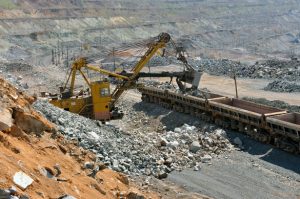Iron ore prices surging on higher imports
It is always a challenge reading markets, whether you look at fundamentals of supply, demand and macro economic developments or whether you are a chartist looking at price trends to see how they compare to previous models, assessing price movement relative to Fibonacci levels and indications from high/low daily pricing data.
One issue we repeatedly see is an overreliance on one metric. The media love a headline and will make a prediction based on just one data point. Stock levels fall — prices must rise, or imports rise – so demand must be strong.
If only life were quite so simple.
Want MetalMiner directly in your inbox? Sign up for weekly updates now.
Rising imports, iron ore prices
More seasoned analysts understand that, and a recent Reuters post is a case in point.
Rising imports and a 25% surge in iron ore prices over just three weeks into top consumer China have been taken by many as a sure bet steel demand is strong. China buys some 70% of seaborne iron ore. As such, it is overwhelmingly the main driver of demand.
The post cites Chinese customs data from Dec. 7 that reported November iron ore imports of 104.96 million metric tons. That total is up 14.6% from October and marks the strongest month since July 2020.
That all sounds immensely bullish, and will no doubt support prices that have pulled back marginally but remain near multiweek highs at over $100 per metric ton equivalent on China’s Dalian exchange (up from the mid $80s early last month).
The market also took support from China’s politburo, promising to promote a “healthy development” of the property sector. That comes shortly after China’s central bank announced a cut in banks’ reserve requirement ratio to bolster slowing economic growth.
For the second time this year, the central bank cut ratios, this time releasing 1.2 trillion RMB ($188 billion) in long-term liquidity to support lending with an eye on the heavily indebted property sector, led by Evergrande. In Reuters’ view, the market is betting on a resurgence of construction after the winter slowdown.
However, several caveats remain.
Much of this increase in iron ore imports is building up in port inventories. The current level is the highest since 2012 for this time of year. Meanwhile, steel prices themselves are falling, with rebar and HR coil both down on the SHFE.
Other ferrous-based prices are also tumbling. Stainless steel prices have hit a five-month low amid rising stocks and weak demand.
Steel consumption and China’s road ahead
Another issue is steel mill consumption. China’s State Council has committed the country to peak emissions by 2030, by pledging a 65% reduction in emissions per unit of GDP (not as far as many hoped China would go as the world’s largest emitter, but still not without ramifications for heavy polluters, like steel). Curbs on the steel sector seen this year are likely to largely remain if Beijing is serious about achieving that goal.
Nor should Beijing’s pledge to promote a “healthy development” of the property sector be seen as carte blanche to encourage unrestricted construction as in the past. It could equally mean it will not allow speculative and largely uncontrolled construction but will rigorously limit private companies’ access to funds if it feels too much enthusiasm could be returning to the sector.
The jury is still out on whether heavily indebted construction firms will be allowed to survive. A few could be made examples of, even if the largest are allowed to continue. Construction is unlikely to be the force it was in the last decade as Beijing continues in its efforts to pivot the economy toward a more sustainable consumption model.
So, further rises in iron ore prices on the basis of ever higher import volumes are far from a surefire bet, however bullish the short-term trends suggest.
Do you know the five best practices of sourcing metals, including steel?



One Comment
Good article, please share steel market details in the future too.